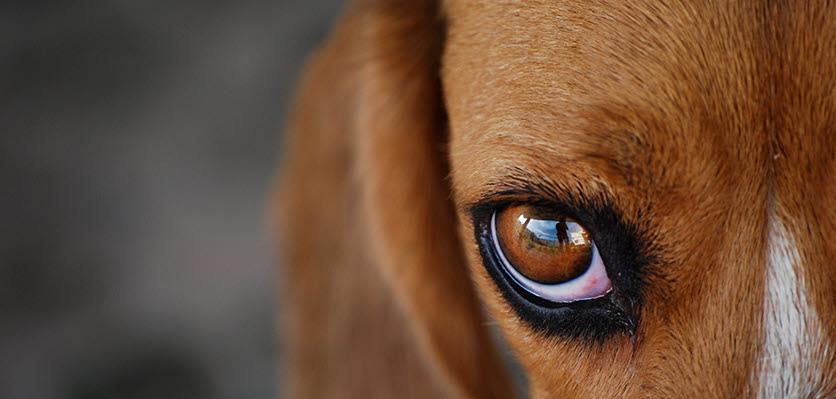Eye discharge in pets

We don’t think much about eye health until something goes wrong. Discharge, redness, swelling, closed eyelids and growths can all signal a problem with your pet’s eyes. Read on to learn about common symptoms of eye problems, what you can try at home and when it’s time to take your pet to the veterinarian.
What you can try at home
All new signs of eye disease must first be diagnosed by your veterinarian before being treated. Many eye problems are emergencies and require prompt treatment to prevent your pet suffering. This treatment may require referral to a specialist veterinary ophthalmologist.
If your pet has been diagnosed with an allergic eye condition or has blocked tear ducts, your vet will outline the care that you can administer at home to alleviate some of the symptoms.
Dogs that have been medically diagnosed with dry eye can be administered relief by using replacement tears from a human pharmacy. These steps will help alleviate discomfort but won’t treat the underlying cause. Therefore, all homecare should be conducted under the guidance of your veterinarian as part of a wider treatment plan.
Signs of eye disease
A normal, healthy eye will be clear, bright, able to stay open without squinting, the whites of the eye will be white and any tears or discharge from the eye will be clear and not thick or discoloured.
The following are signs of an unhealthy eye:
- Redness in the whites (sclera) of the eye
- Yellow or green discharge
- Squinting, inability or unwillingness to open eye
- Cloudiness on the surface (cornea) of the eye
- Bulging of any part of the eye, including one eye appearing larger than the other
- Excessive tearing or watering of the eyes
- Attempts to rub or scratch eyes excessively
- Third eyelid protrusion (red tissue popping up under the bottom eyelid)
- Different sized pupils
- Swollen or crusty eyelids
- Avoiding the light
If you notice your pet’s eyes showing any of the above signs, make an appointment with your veterinarian as soon as possible. Several eye conditions are emergencies and can lead to permanent blindness and intense pain in very short periods of time if left untreated.
When it’s time to take your pet to the veterinarian
Some eye problems resolve on their own. Mild allergic conjunctivitis might resolve with nursing, homecare and removal of the antigen (e.g. avoiding long grasses). Most eye problems, however, will require intervention from your veterinarian. If you’ve noticed your dog’s eyes are weeping or one of your cat’s eyes is suddenly cloudy, make an appointment with your veterinarian today.
